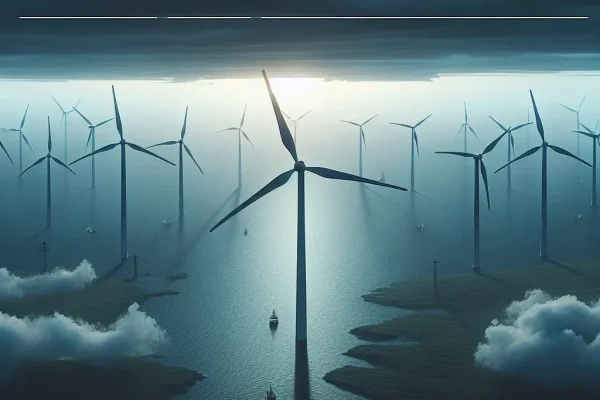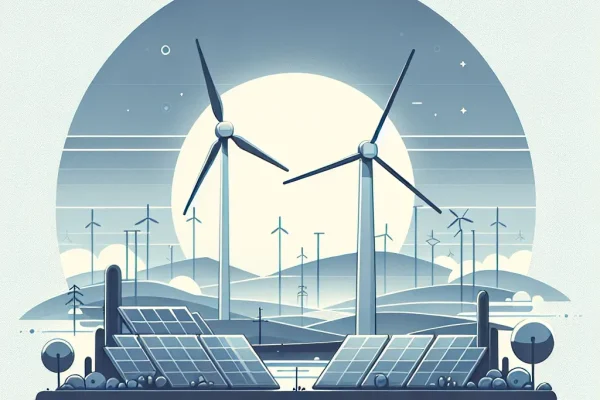Did you know? For the first time in modern history, global oil demand is now projected to peak before 2030—upending more than a century of energy dominance by crude oil. According to the International Energy Agency (IEA), the world could see plateauing and then declining oil demand even sooner than most experts predicted just five years ago (IEA, Oil 2024: Analysis and Forecast to 2030). The energy transition is no longer a distant concern; it’s happening right now, and the next decade could define whether traditional oil giants adapt or are left behind in an accelerating global shift to renewables.
Why does this matter? The impacts are seismic—affecting not just corporations, but millions of jobs, entire economies, and the geopolitical balance of power. As the race toward clean energy heats up, countries and companies are being forced to reimagine their role in a world where oil may no longer be king. Let’s break down what’s happening, why it matters, and what the experts say about the future of the crude oil market.
The Problem: A Tipping Point for Oil Demand
IEA Oil Demand Projections for 2030: The End of Unstoppable Growth?
The International Energy Agency’s landmark „Oil 2024” report, released June 12, 2024, forecasts that global oil demand will reach its peak “before the end of this decade.” This turning point is driven by surging adoption of electric vehicles, improvements in energy efficiency, and policies hastening the energy transition. Bloomberg’s corroboration is stark: “Oil demand to peak before 2030 as energy transition accelerates, IEA says” (Bloomberg, June 12, 2024).
- 2023 Global Oil Demand: Just over 100 million barrels per day.
- Projected 2030 Plateau: 105.6 million barrels per day (IEA).
- Growth Deceleration: In 2023, growth slowed to less than a third of the rate seen pre-pandemic (Financial Times, June 12, 2024).
Renewables Rising: Impact of Renewable Energy on Oil Prices
As renewable energy captures a greater slice of global generation—solar and wind are set to deliver 80% of new power in the coming years (IEA)—oil prices will face new volatility. Increased supply from older, high-cost wells could struggle to find buyers even amidst geopolitical disruptions. Experts warn that with declining demand and robust supply, the era of consistently high oil prices may be over. Long-term oil price predictions now reflect greater uncertainty and lower ceilings.
How Long Will Oil Reserves Last?
While proven oil reserves are technically sufficient to supply decades of demand at current consumption rates, economic viability is shifting. As global decarbonization accelerates, some reserves could become “stranded assets”—valuable in geology, but not in economics or policy. This is a pivotal concern for both governments and investors wondering: Is oil investment still profitable?
Why It Matters: Massive Human and Economic Stakes
The Human Face: Jobs, Health, and Transition Risks
More than 25 million people worldwide work directly or indirectly in the oil and gas sector. These are not just statistics—they are livelihoods. A rapid shift away from fossil fuels without adequate planning could lead to widespread unemployment, skill mismatches, and social disruption.
- Health Benefits: Less oil combustion means cleaner air, fewer respiratory illnesses, and reduced environmental degradation.
- Economic Risks: Oil-exporting countries from Saudi Arabia to Nigeria could see dramatic decreases in government revenue, forcing political and economic realignment.
- Geopolitical Shifts: With reduced reliance on Middle Eastern oil, new alliances form—and old ones could fracture.
Why Consumers Should Care
Lower demand could mean cheaper gas in some regions—but also fuel price unpredictability and inflationary spikes as markets adjust to new energy realities. Energy security, grid stability, and price volatility become everyday concerns for everyone, from households to global corporations.
Expert Insights & Data: Evidence from Authority Sources
IEA: Oil Peak “In Sight”
Fatih Birol, Executive Director of the IEA, declared, “We are at the start of a new era for the oil market. Demand is set to level off this decade as clean energy transitions gain momentum.” (IEA, Oil 2024).
Big Oil’s Strategic Reactions
Industry giants are not ignoring these forecasts. BP, Shell, and ExxonMobil have all expanded investments in renewables, hydrogen, and carbon capture—though not at a scale that matches the warnings of climate scientists or the pace of market change. Financial Times notes, “Big Oil faces an uncertain future amid global push for renewables” (FT, June 2024).
- 2023: Clean energy investments by oil majors exceeded $60 billion globally.
- Hydrogen: More than 50 major hydrogen pilot projects launched in 2023–24.
- Carbon Capture: Projects tripled since 2021, but still only address 0.1% of worldwide emissions (IEA).
The Road Ahead: Predictions and Opportunities (2024-2030)
Oil Demand Projections for 2030 and Beyond
With electric vehicle sales exploding—set to reach over 50% of new car sales in several major markets by 2030 (IEA)—global oil demand growth is expected to flatten and then decline. Long-term oil price predictions from the IEA and leading banks now suggest a range of $60–$85 per barrel for most of this decade, barring major geopolitical shocks (IEA).
Risks: Will Fossil Fuels Be Phased Out?
While a total phase-out is unlikely in the next 10–15 years, rapid decline in demand for road fuels is inevitable in advanced economies. The pace will be determined by policy, consumer adoption of new technologies, and energy storage breakthroughs.
Opportunities:
- Innovation in emissions reduction tech, e-fuels, and green hydrogen.
- Reskilling and upskilling workers in regions historically dependent on oil and gas.
- Diversification of economies in OPEC and emerging markets.
Case Study: Oil vs Renewables Investment (2023–2024)
To visualize the tectonic shift, consider a comparison of global capital flows in 2023-2024.
| Sector | Investment ($ Billion) | Growth YoY |
|---|---|---|
| Crude Oil & Gas | 540 | +3% |
| Renewables | 680 | +7% |
Source: IEA, 2024
Infographic suggestion: “Oil Demand vs Renewable Capacity Growth (2015–2030)”—a line graph contrasting projected global growth rates.
Related Links
- [External: MIT Energy Initiative]
- [External: NASA Climate Change Resources]
- [External: WSJ Energy Coverage]
Frequently Asked Questions
What will replace fossil fuels in the future?
Renewable energy—especially solar, wind, and hydropower—will be the cornerstone of future energy systems. Green hydrogen and next-generation battery storage will complement this shift, enabling a cleaner and more resilient grid.
How is the oil industry adapting to climate policies?
Oil majors are diversifying into renewables, low-carbon technologies (like carbon capture), and sustainable fuels. However, critics argue this adaptation lags behind policy targets and climate demands (FT, 2024).
Is oil investment still profitable?
Short-term profits remain strong, especially in regions with low production costs, but long-term profitability is increasingly uncertain as demand peaks and plateaus. Investors are advised to factor in stricter climate policies and stranded asset risks (IEA, 2024).
How long will oil reserves last?
Known oil reserves could last several more decades at current usage rates, but market, environmental, and policy changes may make much of it economically unviable before it is physically exhausted.
Will fossil fuels be phased out?
A total phase-out is unlikely before 2050, but their share in global energy supply will decrease rapidly, with renewables expected to contribute the majority of growth this decade (Bloomberg, 2024).
Conclusion: Crude Oil at a Crossroads
The future of the crude oil market is now a global question of adaptation, not just extraction. As demand nears its peak and renewables rewrite energy economics, the world faces a historic crossroads: will oil giants transform fast enough, or be outpaced by innovation and policy shifts? The coming decade will determine not only the fate of powerful industries, but the trajectory of entire nations and the climate itself. The real energy revolution is no longer a matter of if, but how fast we’re ready to embrace it.


